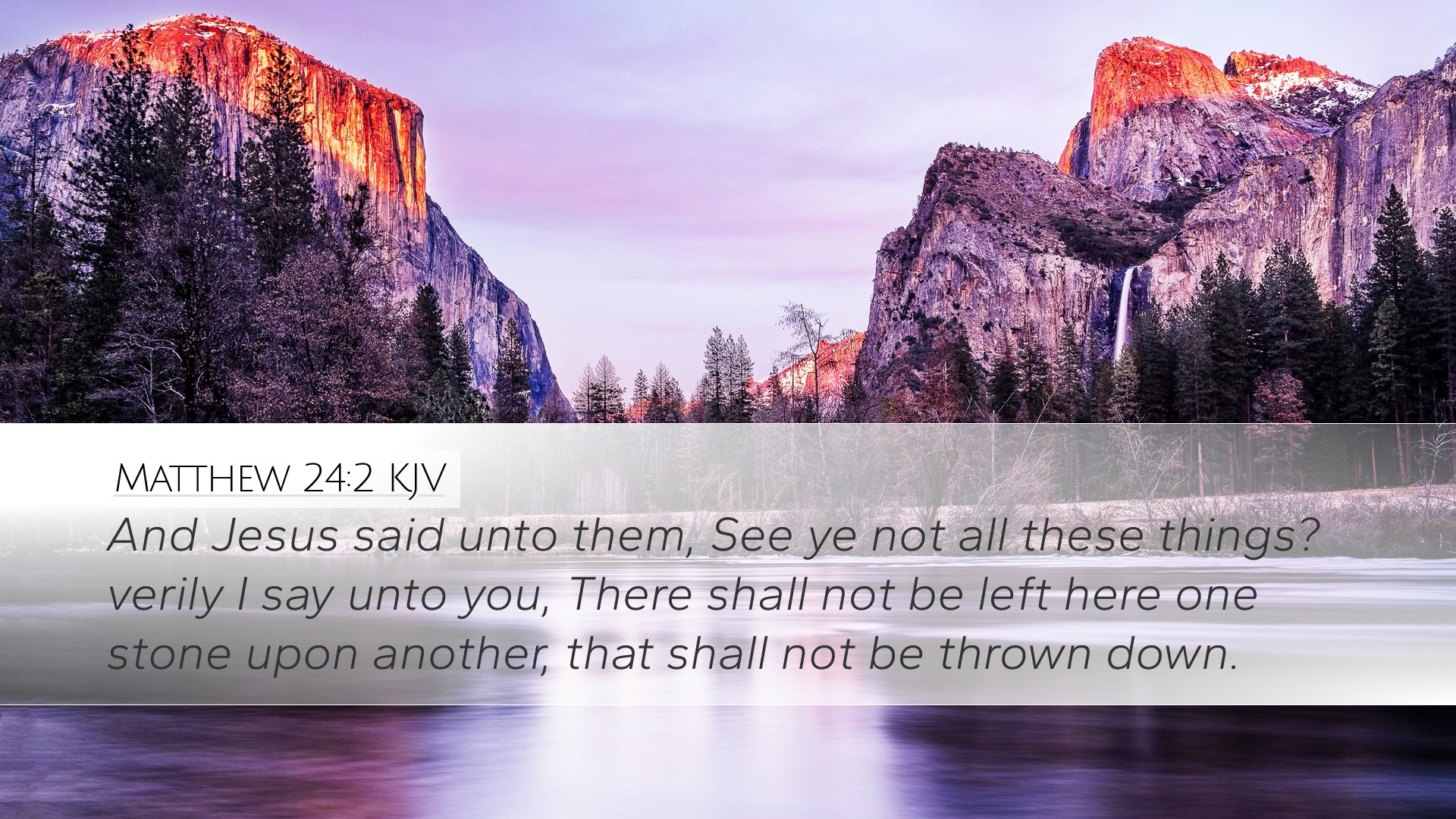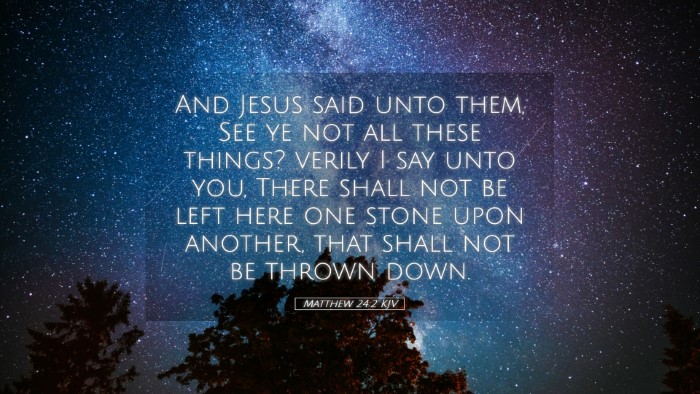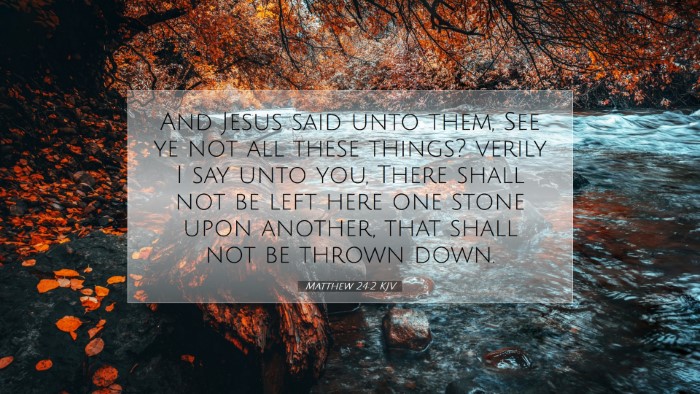Commentary on Matthew 24:2
Verse: "And Jesus said unto them, See ye not all these things? Verily I say unto you, There shall not be left here one stone upon another, that shall not be thrown down."
Introduction
Matthew 24 rests within a profound discourse known as the Olivet Discourse, given by Jesus during the final days of His earthly ministry. This chapter details prophetic utterances regarding the destruction of the Temple and the signs of the end times. The statement in Matthew 24:2 marks a pivotal moment where Jesus predicts the impending destruction of the Temple in Jerusalem, which carries implications for understanding God's eschatological plan.
Contextual Background
The Temple in Jerusalem served not only as a place of worship but as the epicenter of Jewish identity. It was a physical manifestation of God's presence among His people. When Jesus made this declaration, it was shocking to His disciples who esteemed the Temple as indestructible. The context is vital for interpreting the weight of His prophetic words.
Insights from Commentators
Matthew Henry
Matthew Henry highlights the prophetic foreknowledge of Christ, suggesting that Jesus points out the transient nature of earthly structures in contrast to the eternal nature of God's kingdom. His exegesis emphasizes Jesus' foresight of the Temple's destruction as a part of God's divine plan, serving as a symbol of the impending judgment upon Israel. The phrase “not one stone upon another” is elucidated as an indication of total annihilation, symbolizing the finality of Israel's old covenantal system.
Albert Barnes
Albert Barnes elaborates on the implications of this prophecy regarding the Temple's destruction in 70 A.D. He articulates that this event was not merely an architectural loss but represented a theological shift — a rejection of the old covenant and a foreshadowing of the establishment of the new covenant in Christ. He underscores the urgency of this warning as a call to vigilance, urging believers to recognize the signs of times, both during that epoch and in the context of future apocalypse.
Adam Clarke
Adam Clarke provides a historical analysis of the Temple’s grandeur and its significance within Jewish culture. He discusses the impact of the Roman siege in 70 A.D. and connects it to Jesus’ prophetic words, emphasizing the miraculous nature of their realization. Clarke also examines the spiritual implications behind the temple's destruction, suggesting it reflects the notion that true worship is not confined to a physical location, but instead occurs within the hearts of believers.
Theological Implications
- Eschatology: Matthew 24:2 serves to unveil themes concerning the culmination of history and divine judgment, echoing prophetic literature throughout the Old Testament.
- Covenantal Shift: The destruction of the Temple symbolizes a transition from Old Testament Israel's worship and covenantal relationship to a New Testament understanding of faith in Christ.
- The Nature of Prophecy: This verse illustrates the nature of prophetic utterance as being both foretelling and forthtelling, wherein statements deliver warnings but also reveal God's ultimate plan for redemption.
Pastoral Application
For pastors and spiritual leaders today, Matthew 24:2 challenges congregations to reassess what they place their trust in. The physicality of worship and church programs can sometimes overshadow the personal relationship believers hold with Christ. This verse is an urgent reminder that all human constructs are transient; thus, our focus should remain on the eternal promise of Christ and His kingdom.
Conclusion
In conclusion, Matthew 24:2 offers profound insights into the nature of prophecy and the dynamics of faith as it relates to Jesus' identity and mission. The combined commentaries from Henry, Barnes, and Clarke enrich our understanding of both the historical and theological significance of this verse. For contemporary believers, this text continues to be a call to remain vigilant, as the reality of judgment and hope for restoration encapsulated within Christ's last prophetic words resonates through the ages.


